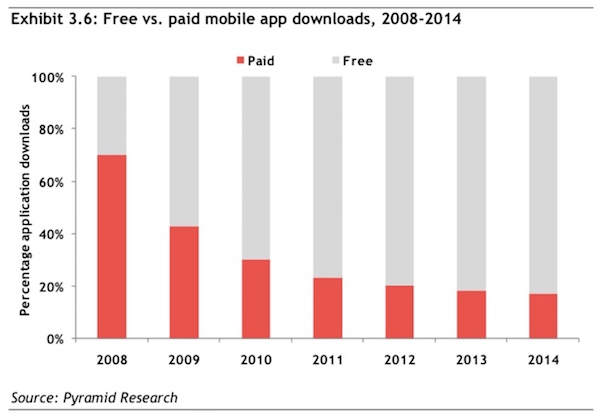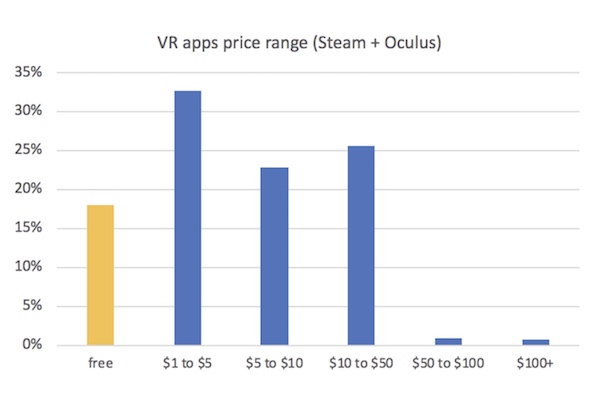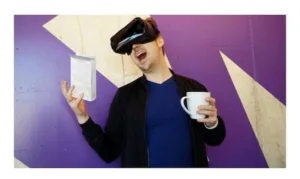I have made these points many times before, there are hurdles on the way to the successful mass adoption of VR and AR that have to be overcome. While AR is so far in the early stages (when we talk about AR headsets that is, AR on mobile phones is not part of this discussion) VR has three major issues to overcome:

- Visual Performance (Image Quality, FoV, etc.)
- Content Availability
- Cyber Sickness (VR Sickness)
All three of these topics have to be solved in a sensible way to create a sustainable and successful mass adoption. Let us take a closer look at these parts and see if we making progress towards the glorious VR future so many analysts are forecasting.
Visual Performance
This is a difficult topic as many high end headsets are pushing the envelope in this direction. For example the Varjo VR-1 claims human eye resolution in the center of our vision while others are moving towards a resolution of 1440 x 1600 (Samsung Odyssey) in tethered devices as well as in standalone devices (Oculus Quest). Since Oculus made a connection between refresh rate and Cyber Sickness (see below) the refresh rate for most devices is somewhere between 70Hz and 90Hz. Another topic is the aspect ratio that is typically around 1:1 with some exceptions sporting a wide aspect ratio. The FoV is set between 90º and 120º horizontally. With a more or less standard mobile display from a resolution standpoint, the FoV is tradeoff against image quality, as the wider the FoV the lower the pixel density.
If you want to see what is on the market today and what has been announced by some developers, Wikipedia has a great webpage listing all existing as well as obsolete VR headsets. There is some good reading for the VR enthusiast, for sure.
Contrast ratio is quite important in direct view displays like LCD and OLED in mobile devices, but is of much smaller importance in VR devices, as they manage to operate in an almost perfect black environment that makes any cinema enthusiast full of envy. Of course in a cinema you do not have to strap a box in front of your eyes and you get better audio as well (in most cases).
All in all, we can see progress in the visual image quality arena, even though the progress is small and dictated by the availability of high resolution mobile displays. The remaining question is when is the state of art VR headset good enough for the average consumer? I think we are getting close, even though we are not there yet.
Content Availability
As with all new technology, getting enough content to the people is difficult in the beginning. The problem of the lack of content is that it deters potential buyers from spending money on VR in the first place. However, VR is not a new technology in that sense, it has been on the market for years with an incredibly small adoption rate. In other words. the first and, most likely, the second wave of VR apps have long been published and further development hinges on how much money people can make in this arena.
In an interesting article from Samuel Huber (published on TheNextWeb.com), he takes a look at the current status of the app development for VR devices. He comes to the conclusion that the market opportunity for paid apps has already passed and the next wave needs to be free content monetized later within the app. To make this point, he showed a graph based on data from Pyramid Research suggesting that in 2014 already 80% of all mobile app downloads were free apps, while just six years earlier 75% of all mobile apps were paid content. He continued that in 2018 only 8% of all apps are paid content. He concludes that VR will have to go through a similar development with many more free VR apps shaping the future of this business.
 Mobile App Content – Paid Vs. Free, credit Samuel Huber
Mobile App Content – Paid Vs. Free, credit Samuel Huber
Today, about 18% of VR apps on Oculus and Steam are already free content, with most apps (>50%) selling between $1 and $10. About 25% of apps sel for more than $10. This will require new thinking by the app developers and may influence the availability of VR apps going forward. For many small app developers a strategy of making the app free and monetize later may just not be sustainable. And even if it is, the small VR base may make it more attractive to go after the AR market on mobile devices.
 VR App Pricing, credit Samuel Huber
VR App Pricing, credit Samuel Huber
There is content available, but without some major uptick in VR adoption this supply of content may shrink as we move forward. In my opinion we are in a good place for now, but there is still some risk going forward.
Cyber Sickness
Since the first VR headsets appeared in the market, reports and anecdotes of people getting sick have been floating on the internet. These reports are credible but very little was known about what caused this issue. Oculus was the first to make a connection between refresh rate of the display and cyber sickness. They increased the refresh rates and the reports of cyber sickness started to reduce. The question is whether Oculus really solved this issue with their approach or if other parameters influenced the results?
So what is cyber sickness? In general using a VR headset causes some people to develop certain symptoms like nausea, headaches, sweating, vomiting, low blood pressure, etc. When looking this up on the internet you will find that the symptoms are basically what other people describe as motion sickness. There are people that get sick in cars, boats, airplanes, roller coasters, etc. Anything that moves can trigger these symptoms and, as a general rule, the stronger the motion the more likely a person gets sick.
Now here comes the interesting part, almost everybody has experienced this kind of motion sickness at least once in their life. Either in a car or on a roller coaster, 85% to 95% of people can get motion sick under the right condition (5% to 10% are very sensitive to this kind of reaction). These numbers are from a manufacturer of motion sickness medication (Montavit) and maybe overly pessimistic, but for comparison Inside Science says 40% to 70% of people using VR feel nauseated after using today’s VR sets for only 15min. They also say that for some of the applications almost 100% of users are getting sick.
VR Sickness is all good fun – Right?
What we can say is that motion sickness is a very real thing and people often show the same symptoms when using VR headsets. Whether we call this Cyber Sickness or Motion Sickness may just be in the eye of the beholder. When we look for research on why we are getting sick in the first place, the generally accepted theory is a sensory conflict between human sensory like eyes, ears, and the general human system. Yes, it is true we humans have no real sensor for speed but we can feel acceleration very well. If we see in VR that we are accelerating and other sensors say we are not, the brain flags a conflict which seems to cause the above mentioned symptoms.
Here is a good question; if such a high percentage of people are susceptible to motion sickness, why has driving cars become such a favorite activity for human kind? And let me add another one, how many people do you know that get car sick on a regular basis? In my experience, car sickness is mainly restricted to children. Adults seem to have overcome this sensitivity. And, for sure, it is not 40% to 70% of the people we know that are getting sick in cars.
Shuhei Yoshida from Sony offers a different explanation at a conference and published in an article by UpLoadVR.com. He suggests that people are actually getting used to Cyber Sickness by using VR on a regular basis. Considering that motion sickness seems to be driven by a conflict our brain can’t resolve, using VR may actually help the brain to resolve these conflicts by not listening to certain sensors in the VR environment. Sure this sounds like a wild idea, but read the comments to the UpLoadVR article and see how several people actually confirm this idea with their own experience.
If this is really true, Cyber Sickness as a barrier to the VR adoption maybe much less important than we originally thought.
All in all, the state of VR is not facing any severe barriers we cannot overcome, but the further development depends on technology advancements and marketing more than anything else. – NH

